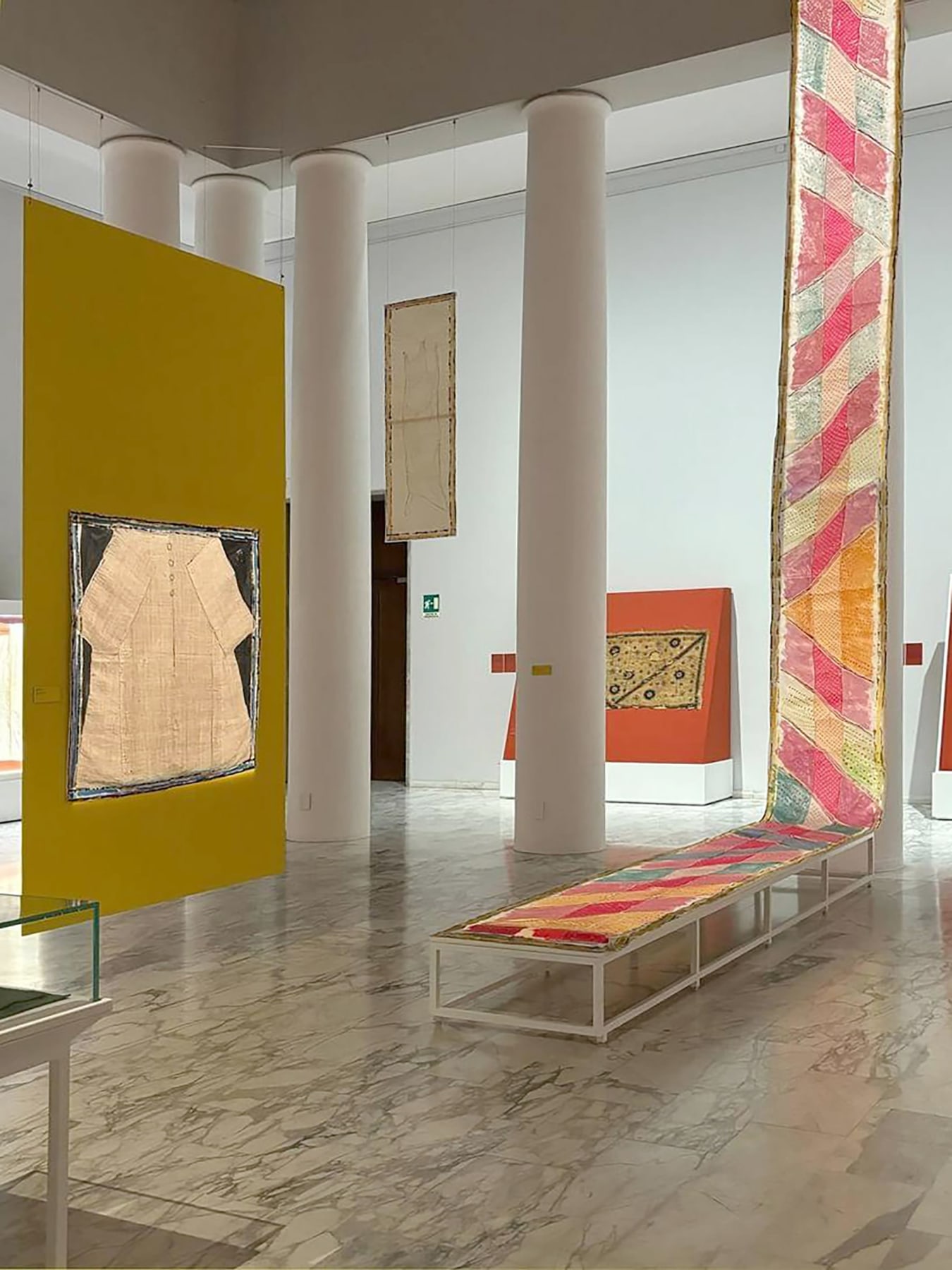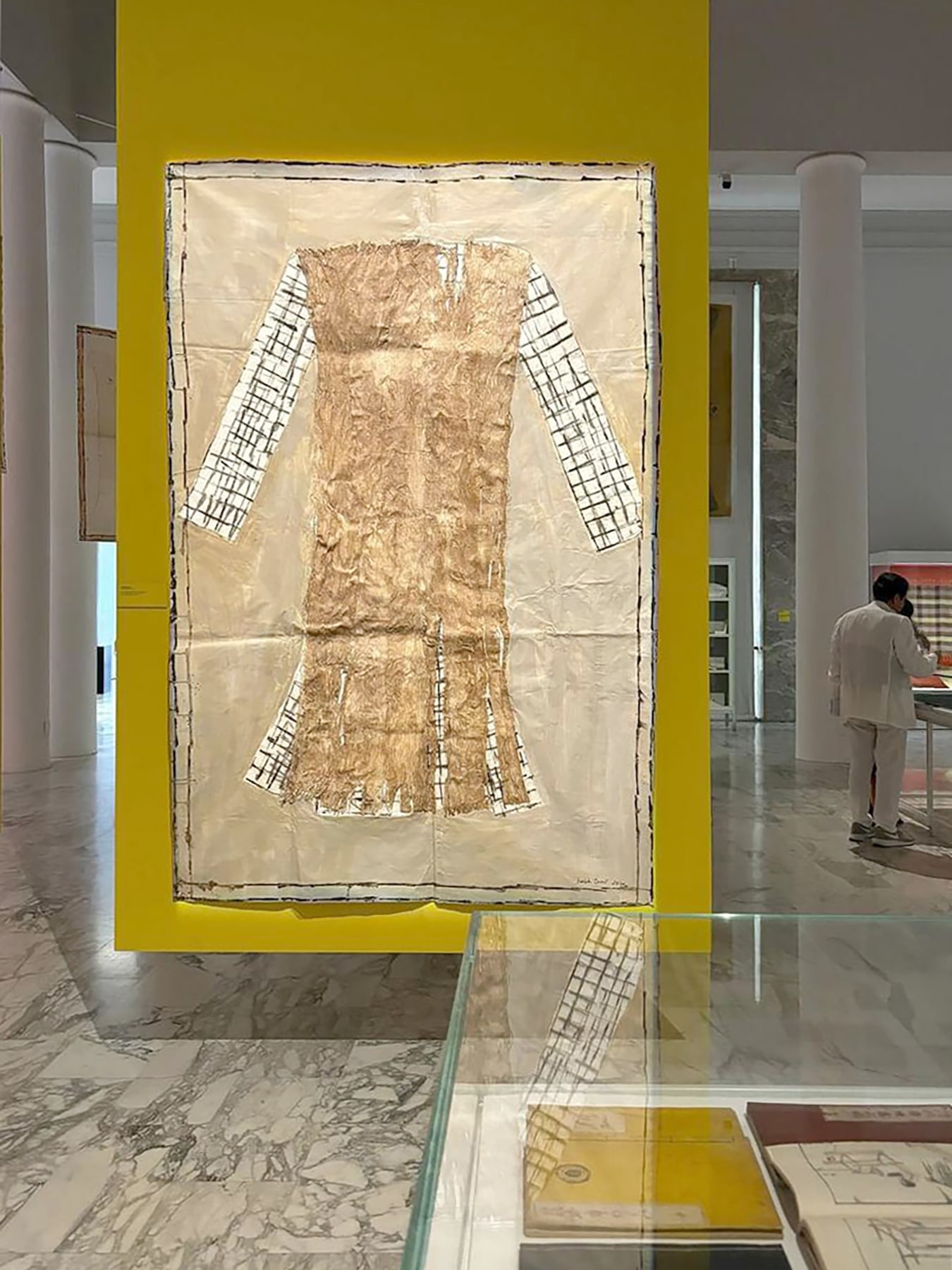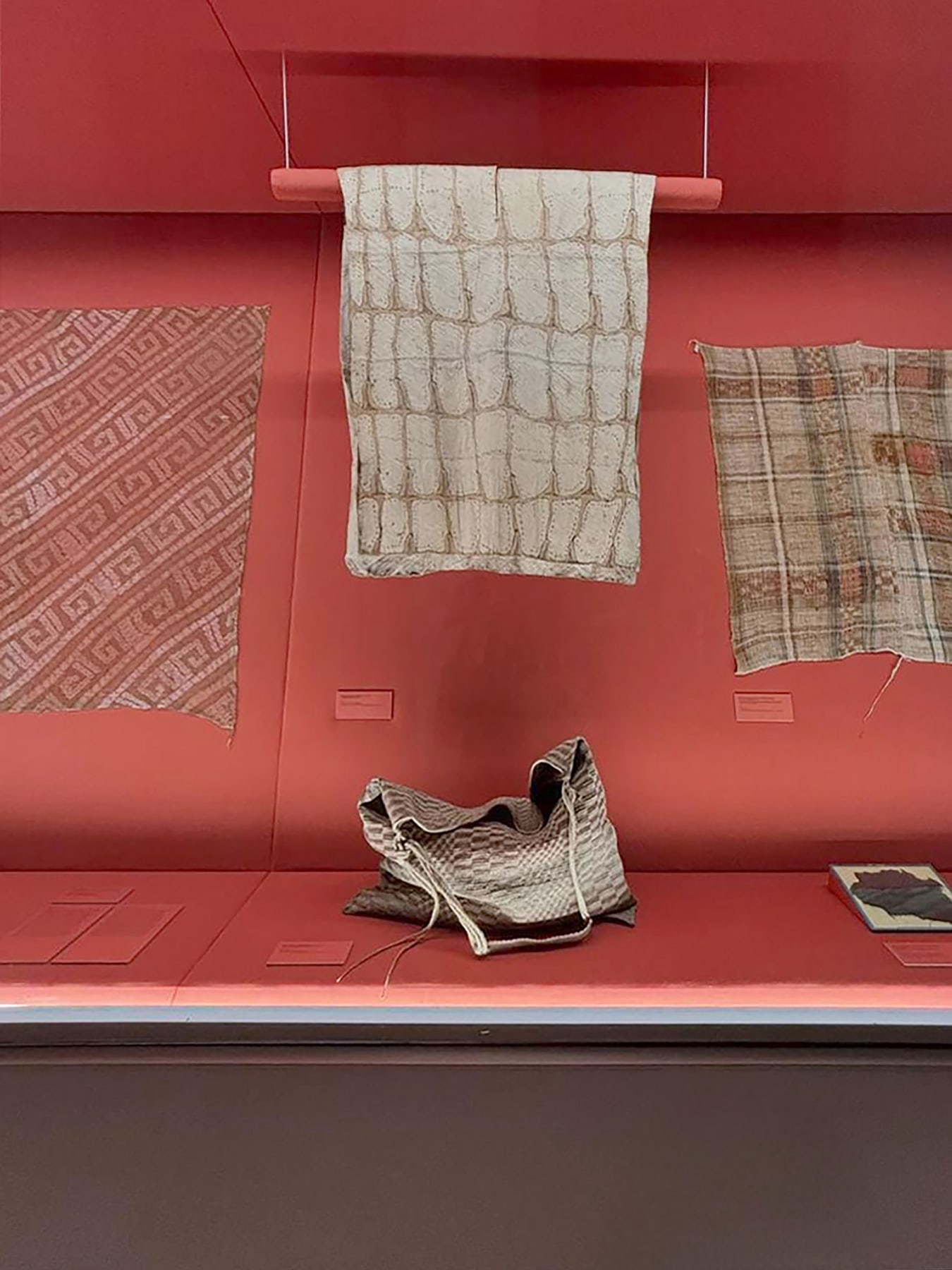Weaving is Human
From 1 August 2024 to 16 February 2025 , at the Palazzo delle Arti e Tradizioni Popolari (Piazza Guglielmo Marconi 8, Rome) the Museo delle Civiltà presents WEAVING IS HUMAN. Isabella Ducrot… and the textile collections of the Museo delle Civiltà. The exhibition narrates the languages and cultures of weaving in an unprecedented dialogue between a selection of textile works from the museum's historical collections – some rarely or never exhibited before – and the works of the artist Isabella Ducrot (Naples, 1931), who finds her inspiration and humanist essence in fabric .

The artist was invited by the Museo delle Civiltà to explore, together with the institution's curators, the heritage of clothes, accessories, ceremonial or everyday fabrics that are kept in the display cases and in the warehouses. From prehistoric archaeology to Italian popular arts and traditions and to the systems of thought, symbols, narratives and rituals of African, American, Asian and Oceanian cultures , the textile collections are among the most fascinating and at the same time fragile of the Museo delle Civiltà, and for this reason they are also the most rarely exhibited. The gaze of the artist, who for decades has been dealing with textile cultures from all over the world, was an opportunity for the museum to be observed from the outside and discover countless points of connection between the heritage it holds and the practice of an artist for whom fabric is not only an everyday material but a millenary instrument of expression and communication between eras, territories and cultures.
The exhibition is contextualized by a complex and wide selection – curated by Francesca Manuela Anzelmo, Paolo Boccuccia, Gaia Delpino, Maria Luisa Giorgi, Laura Giuliano, Vito Lattanzi, Gabriella Manna, Loretta Paderni and Massimiliano Alessandro Polichetti – of garments and artefacts, or even just simple strips of fabric that testify how a fabric is, even before being a functional or decorative element, a rigorous physical structure that manifests itself as a true form of language , to which human beings have entrusted the story – religious and civil, individual and collective – of their cultures. The fabrics on display, coming from all the collections of the Museum of Civilizations , not only tell the progressive formation of its encyclopedic collection , but also document the institutional relationships maintained by the museum with the different cultures that are the object of its study. This section of the exhibition is therefore configured as a possible diary of a journey through space and time and a self-analysis of the history of the museum , interwoven into the structure, between warps and wefts, of its textile collections.

The exhibition itinerary displays some extremely fragmentary fabrics from the Prehistoric Collections dating back to the Bronze Age and coming from the nineteenth-century excavations of Lake Bienne in Switzerland, together with fabrics made in Ethiopia and Congo at the end of the nineteenth and beginning of the twentieth century from the Collections of African Arts and Cultures , fabrics from the Collections of American Arts and Cultures, from the pre-Columbian era to the twentieth century, and examples of Polynesian tapa , a particular type of fabric made with strips of tree bark, from the Collections of Oceanian Arts and Cultures , which together document materials, styles and techniques developed over the millennia by native peoples to respond to social, economic and spiritual needs. Particularly represented in the exhibition are textile works from the Collections of Asian Arts and Cultures , from Himalayan artefacts to a sumptuous Chinese silk satin fabric with dragon decoration dating back to the Qing dynasty (1644-1911) and, finally, work and festive clothes and everyday garments from the Collections of Popular Arts and Traditions , mostly made between the late 19th and 20th centuries and shown for the first time at the International Exhibition held in Rome in 1911.
For Isabella Ducrot , fabric is a palimpsest in which human history is deposited with its countless personal stories , the material trace of immaterial cultures , a traveler who is only “ apparently mute ” from one culture to another , a conduit in which uniqueness is renounced to let the intelligence and sensitivity of the communities to which one belongs prevail , to create contact with others and hope for contact with the divine . Like the explorers who created the textile collections of the Museum of Civilizations , Ducrot also traveled for many years, creating a collection that she carefully folded away in the drawers of a wardrobe and, above all, a multiplicity of works in which the fabric is never a support but the matrix of the work itself . The curators of this section of the exhibition – Anna Mattirolo and Andrea Viliani with Vittoria Pavesi – have made it possible for the first time to share the historical textile collections of a public museum with the artist's research, intending it as a celebration of textile knowledge that is both abstract and concrete, intimate and shared .

What fascinates the artist in a fabric is not its decoration but the compositional relationship between history and structure , its being a “ complex artefact whose invention dates back to mythical eras of human history ”, its being a document that declares “ tastes, aesthetic rules, migrations of signs, visible and tactile testimonies of a culture ”. During her travels and her long-term research, the artist has acquired a strong familiarity with textile materials, identifying in each one a detail with symbolic value. A fabric for her is, therefore, something impalpable but radical in its own way: “ almost nothing, difficult to describe for lack of adjectives, no colours, no decorations, no embroidery, only the affirmation of its essence, simplicity reduced to the minimum terms and yet grandiose and moving, like a patriotic hymn ”. Ducrot has continued to collect and work on fabrics for years, recomposing distinctions and oppositions, using pieces to recompose them into new forms and new works, freeing the fabrics he uses from their original uses to transform them into artistic mediums . Over time, textile material and weaving have become the focus of a passionate dedication, with interpretations and insights that reveal what is beyond the mere material data.
By bringing together African, American, Asian, European and Oceanian works from the textile collections of the Museo delle Civiltà – works that are precious and complex or simple and humble, ancient or modern, intact or torn to shreds – as well as by placing works by other authors alongside their own, this exhibition and the artist invite us to a further journey through time and space. By welcoming into its own history the testimonies that reveal so many other stories, Ducrot’s journey and self-analysis become those of the Museo delle Civiltà… between eras and geographies, cultures and natures, stories of people and stories of collections and museums … a boundless, ancestral connective tissue in which it is possible to affirm that – to quote a passage from a poem by Patrizia Cavalli dedicated to Ducrot’s textile works, which gives its title to this exhibition – “weaving is human”.
